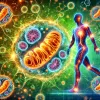Welcome back to our regular feature where we sift through thousands of new, health-related papers, and pick a few to summarize in a practical, simple, and not anxiety-inducing way.
Our main questions on each paper:
- In simple language, what does it say?
- Does it have good evidence?
- Should what it says matter to normal people?
- What simple thing, if anything, could a normal person do to take advantage of this finding?
Okay, away we go. And, as always, we rate each paper for practicality and level of interest, but we are mostly focused on finding ways to simplify findings. And more than anything else, we want to avoid over-optimization, so if a paper is telling you down to the minute how much sunlight to get at dawn, or that you should only drink coffee during eclipses, we are outta there.
This edition's articles and papers:
- Medicine & Science in Sports & Exercise https://journals.lww.com/acsm-msse/fulltext/2024/06000/regular_running_is_related_to_the_knee_joint.3.aspx
- Training Session Models in Endurance Sports: A Norwegian Perspective on Best Practice Recommendations | Sports Medicine https://link.springer.com/article/10.1007/s40279-024-02067-4?utm_source=rct_congratsemailt&utm_medium=email&utm_campaign=oa_20240716&utm_content=10.1007%2Fs40279-024-02067-4
- A 5:2 Intermittent Fasting Meal Replacement Diet and Glycemic Control for Adults With Diabetes: The EARLY Randomized Clinical Trial | Diabetes and Endocrinology | JAMA Network Open | JAMA Network https://jamanetwork.com/journals/jamanetworkopen/fullarticle/2820237
- A physiological approach for assessing human survivability and liveability to heat in a changing climate | Nature Communications https://www.nature.com/articles/s41467-023-43121-5
Paper: Running and Knee Health
Practicality (5/5): 🏃♂️🏃♂️🏃♂️🏃♂️🏃♂️
Interest (4/5): 🏃♂️🏃♂️🏃♂️🏃♂️
Summary
Running moderate distances promotes healthier knee cartilage, compared to both running large distances and being inactive.
What is the paper's main claim?
- Running moderately is likely good for knee cartilage health.
- Both excessive running and inactivity can potentially lead to poorer knee cartilage conditions.
Are the methods and/or data it uses appropriate and convincing?
- Involved over 1,000 participants, which is a robust sample size.
- The effect size and statistical power are appropriate, revealing significant results, especially regarding runners covering distances over 40 km per week.
- There are potential biases due to the selection of only healthy individuals capable of running, which may limit the generalizability of findings.
What do we know now that we didn't know before, if anything?
- This study presents a detailed analysis suggesting a U-shaped relationship: moderate running benefits knee cartilage, while both excessive running and no running at all do not.
What simple and practical thing could a normal person do knowing this?
- Maintain a regular running routine to potentially optimize knee health and prevent cartilage deterioration.
Paper: Training Models Used by Top Coaches
Practicality (3/5): 🏃♂️🏃♂️🏃♂️
Interest (3/5): 🏃♂️🏃♂️🏃♂️
Summary
This study looks at how elite coaches design training sessions for endurance sports, comparing session models across different sports and intensities. It finds significant variation in how training sessions are structured, often due to the specific demands and tolerances of the sport. There is a general trend towards controlled, medium-volume training rather than HIIT.
What is the paper's main claim?
- Elite coaches vary training session models greatly due to sport-specific demands.
- Interval training sessions by top coaches are more controlled and less exhaustive than many published recommendations.
Are the methods and/or data it uses appropriate and convincing?
- Sample of 12 Norwegian coaches known for training world-class athletes; however, the sample is small and culturally homogenous.
- Uses a mix of questionnaires, interviews, and historical training logs; while thorough, the lack of diverse cultural backgrounds could limit generalizability.
What do we know now that we didn't know before, if anything?
- Elite practices favor medium volume and controlled intensity, contrary to some existing scientific recommendations.
- The specific ways different sports adapt session models show that no one-size-fits-all approach applies.
What simple and practical thing could a normal person do knowing this?
- Focus on more controlled and less exhaustive training sessions, ensuring consistency and quality over time.
Paper: Intermittent Fasting for Blood Sugar Control
Practicality (4/5): 🏃♂️🏃♂️🏃♂️🏃♂️
Interest (4/5): 🏃♂️🏃♂️🏃♂️🏃♂️
Summary
This study explored the effects of a 5:2 intermittent fasting diet combined with meal replacements on blood sugar and weight in people with early type 2 diabetes. The findings suggest that this diet outperformed two common diabetes medications in both blood sugar reduction and weight loss over 16 weeks. The 5:2 diet could offer an alternative to traditional medication for managing early-stage diabetes.
What is the paper's main claim?
- The 5:2 meal replacement diet resulted in better blood sugar management and weight loss than metformin and empagliflozin for adults with early type 2 diabetes.
- It could serve as an effective initial treatment for managing type 2 diabetes.
Are the methods and/or data it uses appropriate and convincing?
- The study included 405 participants, which offers a reasonably robust sample size, though potential biases like diet adherence were not fully explored.
- The effect size for blood sugar reduction (1.9% vs. 1.6% and 1.5% for the drugs) is significant, but relatively small differences might limit its practical significance.
What do we know now that we didn't know before, if anything?
- Combining intermittent fasting with meal replacements can result in notable short-term improvements in blood sugar control and weight loss in diabetes patients.
What simple and practical thing could a normal person do knowing this?
- An intermittent fasting diet with meal replacements is a possible alternative to starting medication, ideally under medical supervision.
Paper: Heat Survivability and Liveability
Practicality (5/5): 🏃♂️🏃♂️🏃♂️🏃♂️🏃♂️
Interest (4/5): 🏃♂️🏃♂️🏃♂️🏃♂️
Summary
This study explores how different combinations of temperature and humidity affect human ability to survive and engage in daily activities in a warming world. The research develops an advanced model considering both environmental and physiological factors to predict heat stroke risks and limits on safe physical activity. The findings show significant potential for overestimating human heat tolerance if not incorporating detailed physiological responses.
What is the paper's main claim?
- Conventional models overestimate human heat tolerance by not considering real-world physiological responses.
- The study introduces a more detailed model to predict heat survivability and liveability considering individual differences.
Are the methods and/or data it uses appropriate and convincing?
- Sample sizes and empirical evidence are robust, including varied age and health profiles.
- The model considers realistic factors like sweat rates, activity levels, and shaded vs. sun exposure, which strengthens its predictive power.
What do we know now that we didn't know before, if anything?
- Traditional models using a fixed heat threshold of 35°C for survivability can vastly overestimate actual human tolerance to heat.
- The study highlights the critical impact of age and humidity on heat tolerance, showing older adults face considerably lower limits.
What simple and practical thing could a normal person do knowing this?
- Recognize the importance of shaded environments and staying hydrated to support heat tolerance.
- Focus on gradual acclimatization to higher temperatures, especially for older individuals.
Back next week with thoughtful and simplifying takes on papers getting attention. And if you see anything you want us to look at, let us know.





